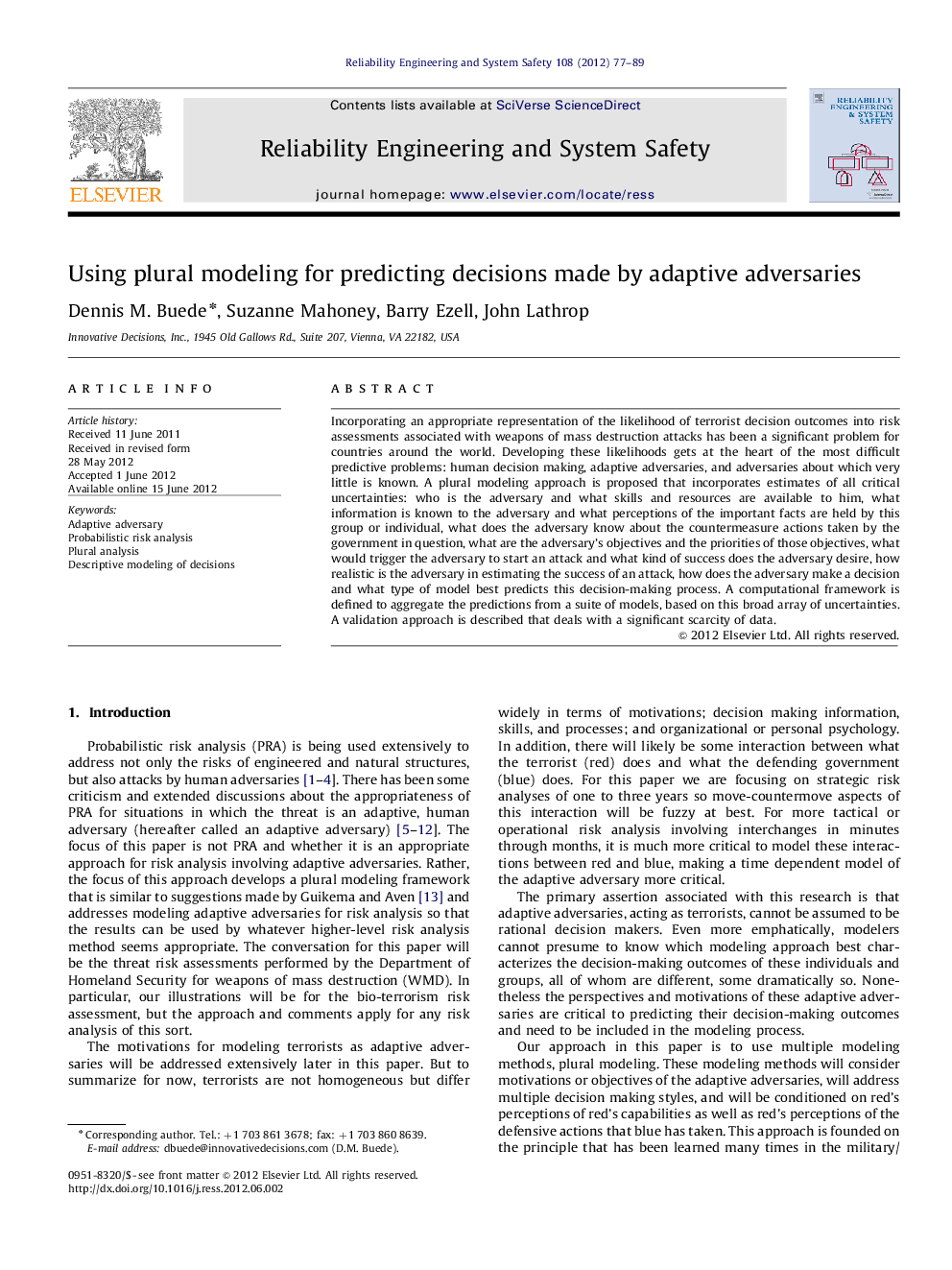| Article ID | Journal | Published Year | Pages | File Type |
|---|---|---|---|---|
| 805720 | Reliability Engineering & System Safety | 2012 | 13 Pages |
Incorporating an appropriate representation of the likelihood of terrorist decision outcomes into risk assessments associated with weapons of mass destruction attacks has been a significant problem for countries around the world. Developing these likelihoods gets at the heart of the most difficult predictive problems: human decision making, adaptive adversaries, and adversaries about which very little is known. A plural modeling approach is proposed that incorporates estimates of all critical uncertainties: who is the adversary and what skills and resources are available to him, what information is known to the adversary and what perceptions of the important facts are held by this group or individual, what does the adversary know about the countermeasure actions taken by the government in question, what are the adversary's objectives and the priorities of those objectives, what would trigger the adversary to start an attack and what kind of success does the adversary desire, how realistic is the adversary in estimating the success of an attack, how does the adversary make a decision and what type of model best predicts this decision-making process. A computational framework is defined to aggregate the predictions from a suite of models, based on this broad array of uncertainties. A validation approach is described that deals with a significant scarcity of data.
